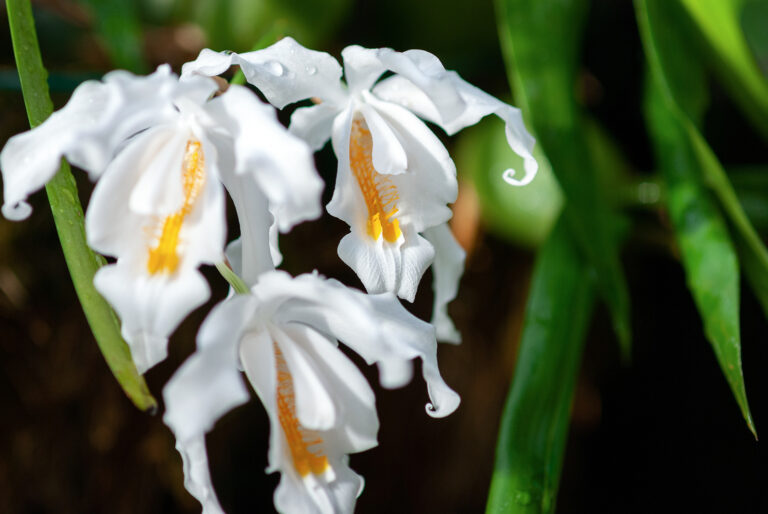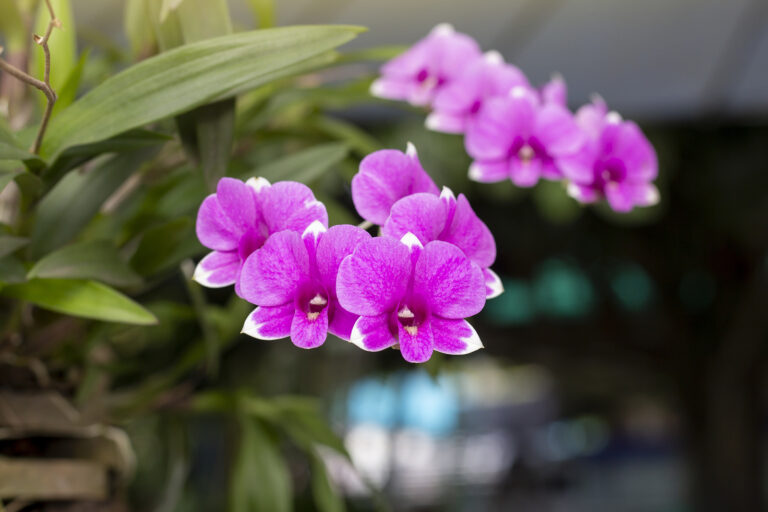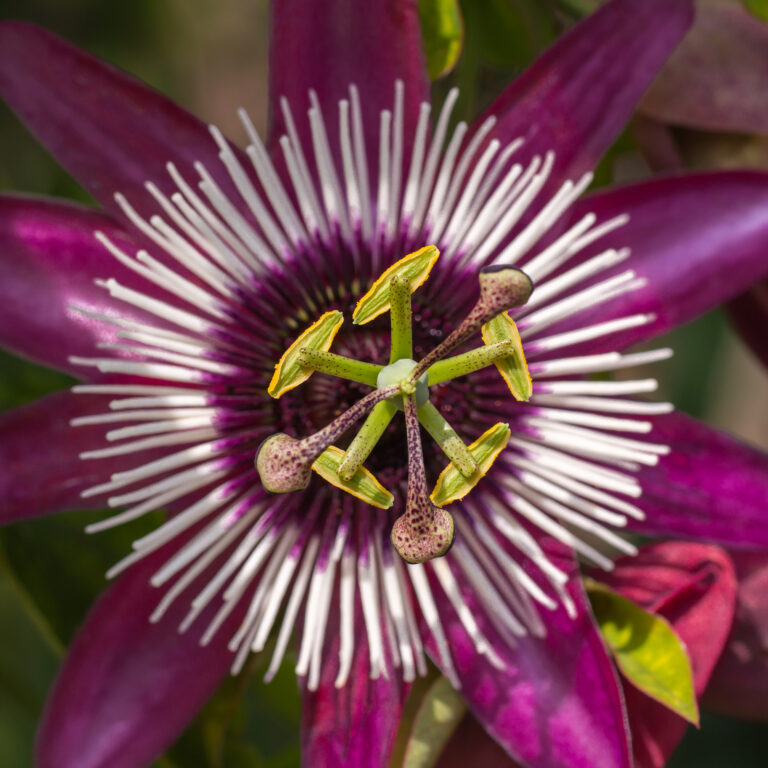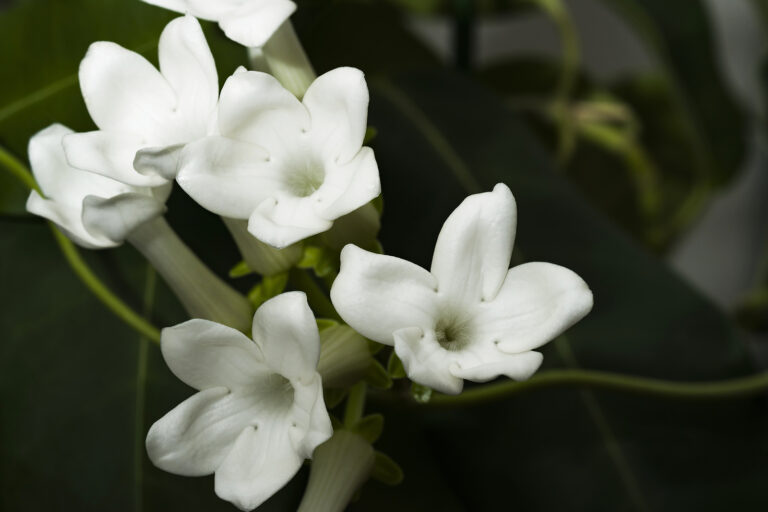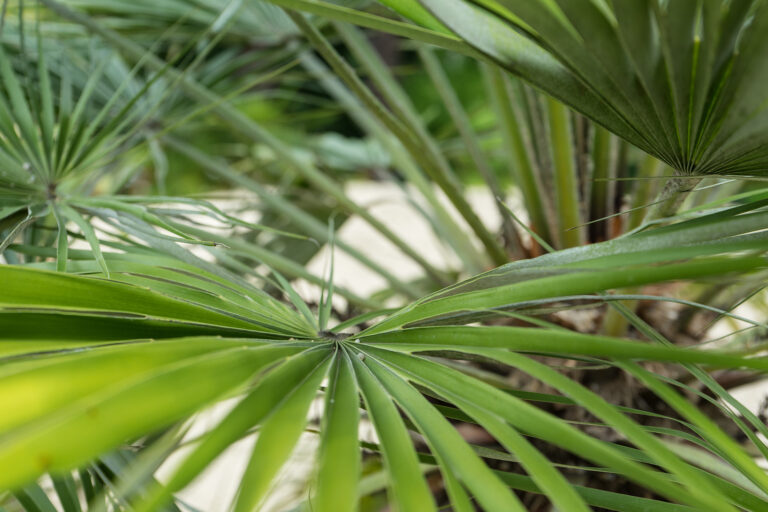How to Grow Chenille Plant — Acalypha
Acalypha–commonly called chenille plant–is adorned with pendulous fuzzy red tassels. Acalypha is perfect for hanging baskets. This plant loves bright light and will bloom several times a year in the right conditions.
Keep Acalypha consistently moist, fertilize every six weeks, and pinch back after each period of bloom. There are purple and creamy-white varieties of Acalypha as well.
Acalypha can be grown outdoors in tropical regions. Grow Acalypha as a houseplant in chilly winter regions.
Acalypha needs yearly pruning to keep it attractive and bushy.
Acalypha is a genus of about 430 species of flowering shrubs and trees native to Malaysia and New Guinea.
Get to know Acalypha
- Plant type: Tropical evergreen shrub, houseplant
- Growing Zones and range: Thrives in tropical climates; does well in greenhouse or enclosed patio
- Hardiness: Tender
- Optimal growing temperature: day 70°F (21°C), night 60° to 65°F (16°-18°C)
- Height and width: 2 to 3 feet (.6-1m) to 10 feet (3m) tall in the tropics
- Foliage: Coarse, usually toothed, and prominently veined
- Flowers: Long, slender, drooping, fuzzy plumes to 1½ feet long
- Bloom time: Heavy bloom in summer; scattered blooms throughout the year
- Uses: Hanging baskets
- Common name: Chenille plant, copperleaf
- Botanical name: Acalypha hispida
- Family: Euphorbiaceae
- Origin: Malaysia and New Guinea
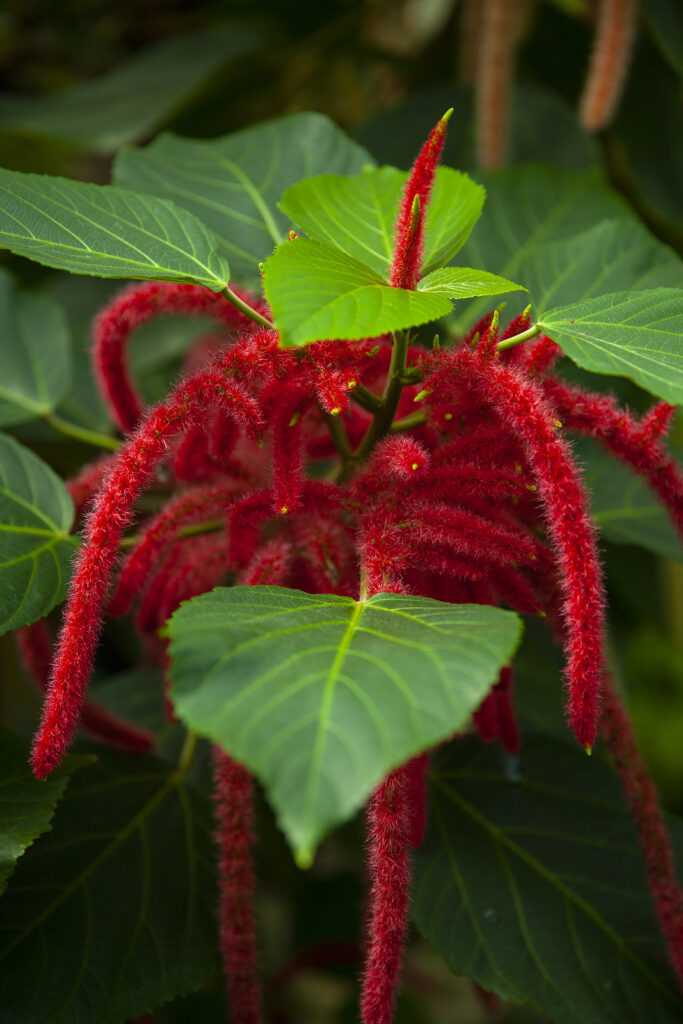
Where to plant Acalypha
- Light: Grows well in either direct light or bright light and average to warm indoor temperatures.
- Humidity: Grow best where humidity is high.
- Soil: Plant in an indoor potting mix; light humus-rich soil.
When to plant Acalypha
- Set Acalypha outdoors in tropical regions.
Planting and spacing Acalypha
- Acalypha grows 2 to 3 feet (.6-.9m) tall and wide indoors.
- Acalypha grows 10 feet (3m) tall and 6 feet (1.8m) wide outdoors in tropical regions.
How to water and feed Acalypha
- Keep growing medium evenly moist.
- Fertilize Acalypha every month with houseplant food.
Acalypha care
- To keep plants bushy, cut them back in early spring before new growth starts.
Growing Acalypha as a houseplant
- Acalypha will grow well in either direct light or bright light and average to warm temperatures.
- Acalypha grows best when humidity is kept high; humidity of 45% to 50% is best.
Keep the growing medium evenly moist and fertilizer every month. - To keep plant bs bushy, cut them back in early spring before new growth starts.
Acalypha pests and diseases
- Acalypha is susceptible to leaf spot, root rot, powdery mildew, mealy bugs, and scales.
Acalypha propagation
- Propagate Acalypha by stem cuttings.
Acalypha varieties to grow
- Acalypha godseffiana. Grows to 20 inches (51cm) tall; bright green, yellow-edged leaves and greenish-white flowers.
- A. hispida, chenille plant. Grows to 30 inches (76cm) tall; has broad, oval, hairy leaves and hanging spikes of red or purple. Cultivar ‘Alba’ has white flowers with a light pink cast.
- A. wilkesiana. Grows to 30 inches (76cm) tall; coppery leaves with red and purple markings; red flowers.
Acalypha — Chenille Plant frequently asked questions
Q: What growing conditions are best for Chenille Plant, Acalypha?
A: Alcalypha wants to be kept warm, 65° to 80°F during the day and not less than 60°F at night. The plant wants bright light with little or no direct sun. Keep the soil or potting mix moist at all times. Humid air is important for the chenille plant; surround the pot with damp peat or place it on a stand of pebbles in a tray of water. Feed the plant regularly during the growing season. Repot the chenille plant once a year if you do not start new plants from cuttings.
Q: Why do the leaves of Acalypha drop?
A: Acalypha needs high humidity. When the air is dry leaf drop happens and the plant is susceptible to attack by red spider mites. Mist the leaves frequently and place the pot on a tray of pebbles with water.
Q: My chenille plant looks straggly and leggy. What can I do?
A: Remove dead tassels from the plant and prune it back to half its size in late summer or early spring if the plant is overwintered. To keep the plant bushy, cut it back before new growth starts in spring.
Q: How do I propagate the chenille plant?
A: Take stem cuttings in spring. Dip the cut end in a rooting home and place the cutting in a seed starting mix or potting soil. Give the cutting bottom heat until it roots. A common practice is to take cuttings each year to provide a regular supply of young and vigorous plants.


